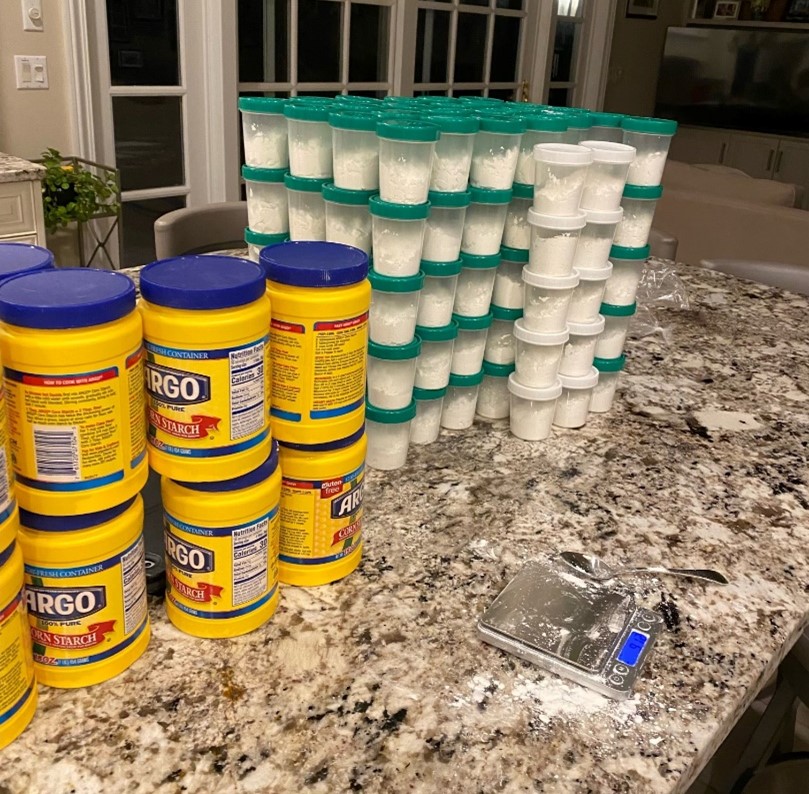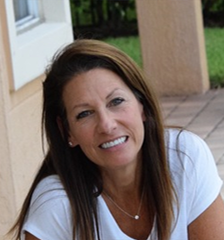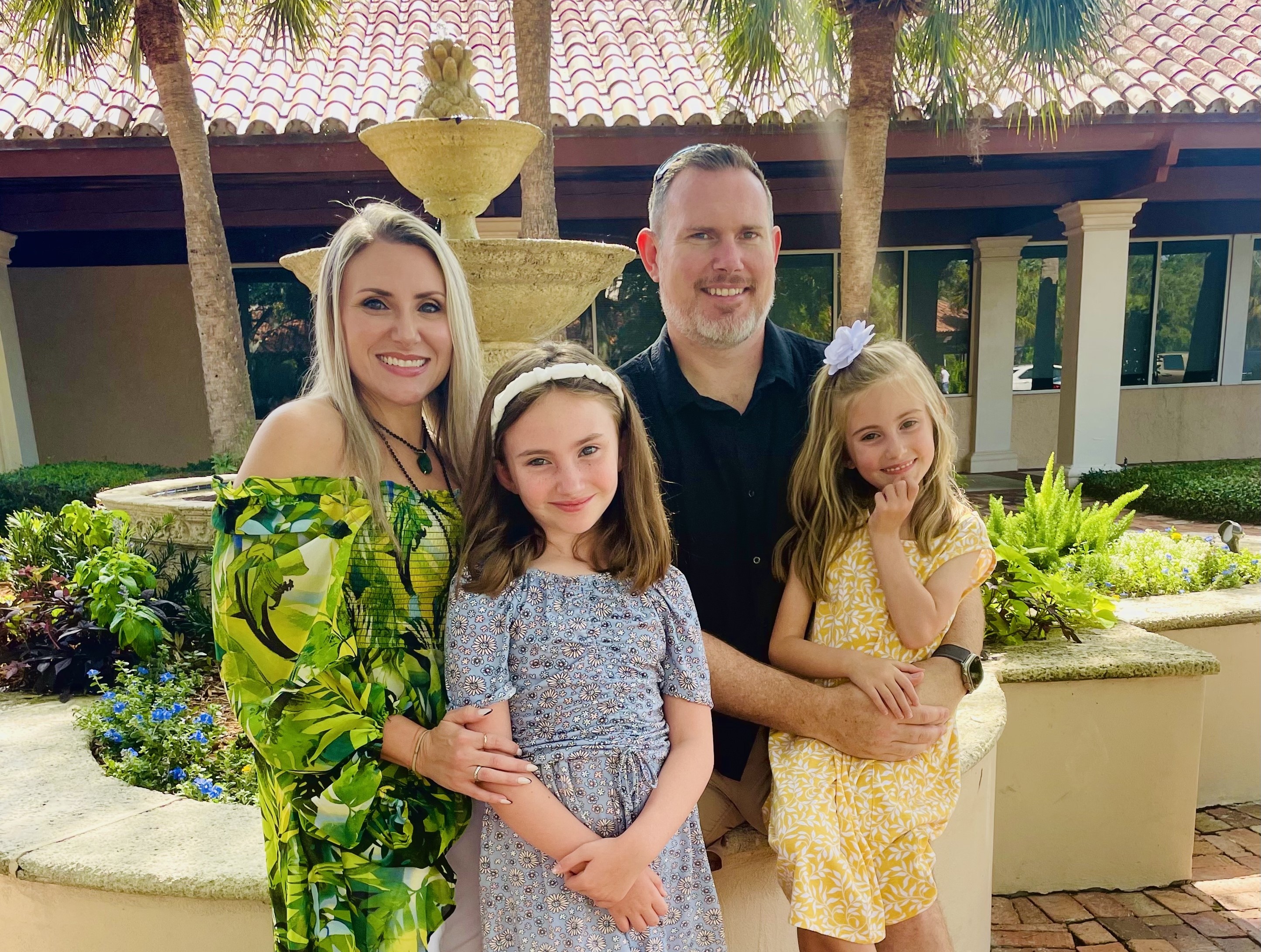Imagine raising a child who, beginning in infancy and continuing for the rest of their life, needs to eat raw cornstarch at regular intervals around the clock to maintain normal blood sugar levels. Now imagine the daily stress and anxiety associated with knowing that missing just a single dose of cornstarch could lead to serious complications and even death.
That is the reality for families affected by Glycogen Storage Disease Type Ia (GSDIa), a genetic disorder that results in the buildup of glycogen in the body’s cells and an inability to regulate and maintain normal blood sugar levels.
Michael Julius and Lisa Hodes, advocates, caregivers and board members of The Children’s Fund for GSD Research, share their perspectives on the complexities of raising children with this rare genetic disorder.
What it means to live life by the clock.
As a GSD caregiver, I was constantly aware of what time it was, when the last cornstarch dose was given, and how much time remained to the next feed,
explained Michael.
“In the very early years, we struggled to keep our two daughters alive. We needed to feed them every 30 minutes around the clock or their blood sugar would drop to dangerous levels. We needed to stick them with a needle in the heel of their foot every half hour to check their blood sugar. During those early years, they were both on a feeding pump at night, which would continuously give them glucose. This alleviated the need to feed them every half hour but presented other problems, like seizures. Once they were old enough for cornstarch therapy, they were able to go a bit longer between feedings, but not long enough to do anything or go anywhere. The fear of missing a feeding was so intense that I basically attended preschool with them,” shared Lisa.
“Over the years, we’ve learned a lot about nutrition and have altered diets accordingly, but this has not been easy and continues to be complicated and demanding. We struggle to find the appropriate amount of carbohydrates and cornstarch needed to maintain normal blood sugar levels. It changes constantly and needs to be adjusted often. Mismanagement of this causes dangerous biproducts in the body, and new medical issues arise that need to be treated. Dangerously low blood sugar levels are still an issue and happen often. Emergencies and frantic trips to the ER are not as frequent but are still part of our lives,” added Lisa.
What is simple for others, is not simple for us.

Photo: A photo of cornstarch dose preparations provided by Lisa Hodes.
“As my daughters got older, we were faced with new challenges. The need to drink cornstarch every few hours and follow an extremely strict diet that did not include any form of sugar made it difficult for them to attend school, playdates, class trips and birthday parties,” said Lisa.
To simply leave the house, individuals with GSD need a schedule and a bag packed with premeasured cornstarch, snacks, water, emergency rescue supplements and emergency protocol letters.
“Raising a child with GSDIa is extremely difficult. Each new stage of life presents new challenges. There is no such thing as spontaneity. Anything that might require a change in schedule or have an effect on blood sugar levels – traffic, flight delays, meetings, activities, extreme weather, the inability to get food or water – can cause a life-threatening episode for someone with GSD,”
noted Lisa.
Michael discussed how common medical procedures are some of the most dangerous times for children with GSD. Being on a dextrose IV can elevate their insulin levels and removal of an IV without first providing cornstarch results in a seizure very quickly. This means that routine procedures, such as removing wisdom teeth and fixing broken bones, require an in-hospital visit.
Due to the strict feeding schedule, travel requires a tremendous amount of planning. “You not only need to plan for your trip, but you also need to plan for the unexpected – cancelled flights, delays, lost bags, broken cornstarch cups. After one failed vacation, we bought a new house with a large backyard and didn’t take another trip for almost 10 years,” Michael added.
The mental burden is immense.
“As a parent, it’s hard not to worry each time your child is out of your sight. As a parent of a child with GSD, this worry is exponential and sometimes paralyzing. The need to drink cornstarch every four hours overnight is stressful and exhausting. The lack of sleep for the last 26 years has taken a toll on all of us,” Lisa revealed.
The mental and physical effects on the GSD community are intense and unforgiving, but we have hope that new treatment advances will alleviate some of the burden and allow our children to live the carefree lives they deserve,
Lisa concluded.
About the authors

Michael Julius is one of the founding members of The Children’s Fund for GSD Research. He has three children, including his son Adam who has GSDIa.

Lisa Hodes joined the Board of The Children’s Fund for GSD Research in 2004. She has two adult daughters, Samantha and Katie, both of whom have GSDIa.







